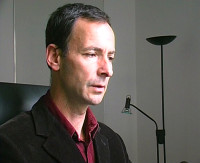That the socio-cultures of hearing and the sonospheres of listening have been extended by the impact of technical media in modernity is an academic commonplace by now. Rather than making this the object of research, this lecture focuses on technologies themselves as “archaeologists” of acoustic and sonic phenomena (the Siren songs), confronting “hearing history” with archaeology of listening.
The sonic (in German clearer as neologism: “das Sonische”) differs from a simply physical notion of sound (“Klang”) in that it strictly depends on its technical embodiments and algorithmic implementations; in audio recording, the forms of electronics make a difference indeed. Different from scripture-based storage, sonic memory represents a different kind of archive indeed (material entropy versus symbolic endurance of sound recording). Apart from the case study of institutional sound archives proper, let us ask: Is there a “sound of the archive” itself? Message or noise: Taking into account sonic delay and media-based time axis manipulations, acoustic archaeology furthermore asks: What is the “sound of tradition”? Questioning the historicity of musical articulation (“archiving presence”) leads to the discussion of time-invariant presence affects resulting from technological reproduction of sound.
Active media archaeology remembers past sonospheres by technical media. Listening to the archive in media-archaeological ways not only leads to unexpected audio-recordings and other revelations of the sonic past (Au Claire de Lune) but to new forms of articulation (sonification) of past times themselves. Listening to modernity, conceived as sound from the archive, does not simply lead to an extended notion of cultural history but to a different modelling of cultural time in terms of resonance and “acoustic space” (McLuhan). A privileged alliance between sound and operative media analysis turns out the moment once their common denominator has been detected: both are radically time-based “arts” (technai).

